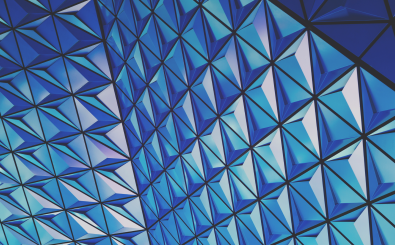To say it was exciting to be in person with colleagues and clients from around the world to celebrate good work is an understatement. The energy was high, the work was impactful and the key learnings many. While we were back in person, it certainly wasnтАЩt тАЬnormalтАЭ as new brands (big and small) broke through, the work was braver than ever before, a new category stood out and brands have truly evolved from just creative campaigns to leading the way on topics that are changing the world. Here are my top five takeaways:
- Brands are taking action, not just having a purpose: Purpose is still critical but has evolved from a brand taking a stand to an essential strategy that guides action. It is no longer just a long-term commitment, brands are now taking action quickly to address real-time societal issues, pivoting their business models for the greater good. I saw a strong example of this while looking at the work in the Palais. With bars being forced to shut down during the pandemic, Heineken developed "" program out of Dublin, buying back kegs from bars that had closed due to the pandemic and using the beer and their facilities to create a wide range of solutions to serve the global community including animal feed, water, biogas, etc. Overall the brand pledges to тАЬBrew a Better WorldтАЭ, putting sustainability and action at the forefront of its business ventures.
- Marketers are creating new frameworks: Marketing is in a bit of a crisisтАФthe old tried and true marketing models arenтАЩt working for all. The best example of this was a session I sat through with Raja Rajmannar, the Chief Marketing and Communications Officer at Mastercard. Mastercard is doing some amazing work to be more relevant through multi-sensory marketing тАУ using all 5 senses to build the brand, which includes aтАпMastercard melody, cards designed for the blind, and MastercardтАпrestaurants.тАп But my favorite was because as Raja mentioned, studies show thatтАпpeople recall 35%тАп of what they smell versus just 5% of what they see. Because of this effort the brand is being talked about for the first time in outlets like Vanity Fair and Vogue. Oh, and a portion of the proceeds will go to MastercardтАЩsтАпPriceless Planet Coalition, which fights climate change and protects the environment through its mission to restore 100 million trees around the world by 2025 (thereтАЩs that тАЬactionтАЭ again!).
- PR and social at the forefront of creative work: Almost every piece of work that won had a PR and social first mindset, along with demonstrating how critical the integration between the two are. A perfect example was Skittles with its . In 2013, Skittles replaced its lime flavor with green appleтАФwhich left many consumers upset. They decided to bring back the lime flavor, kicking off with a тАЬpress conferenceтАЭ livestreamed on Twitch and TikTok which highlighted unhappy consumer tweets and apologies to go along with them. They actually tweeted an apology to every consumer (over 130,000) letting them know lime was back. What started in social, gained attention quickly with media, and is a prime example of how to engage consumers directly along the way.
- B2B marketing is having a moment: Beyond the fact that B2B marketing was a new category at the Cannes Lions this year, B2B marketing is evolving. The lines between stakeholder targets and consumers are blurring and more B2B companies are recognizing the importance of transforming their business to tell their stories across a multi-stakeholder audience. One of my favorite pieces of work in this category was Dole, who partnered with startup Ananas Anam to produce Pi├▒atex, a vegan, sustainable leather alternative made from the fiber of pineapple leaves from farmers in the Philippines that would otherwise go to waste. This effort gave a sustainability option to the fashion industry, with major brands and retailers including Hugo Boss, H&M and Nike using the material. It also demonstrated DoleтАЩs commitment to sustainability while building the brand through storytelling. More brands have an opportunity to communicate with B2B audiences while also demonstrating their purpose to consumers. Check out more on the new B2B category here: .
- Programs at the speed of culture make an impact: Call it тАЬnews jackingтАЭ or just a really good program that led to impact, but I saw many brands whose efforts were not planned a year in advance with major budgets, but rather drove awareness and cultural relevance in real-time. A great example of this was a small Parisian running store called Distance. The day after the speed limit was lowered in Paris which created national buzz among Parisians, the local shop captured video and photos from speed cameras recording runners as they broke the ParisтАЩ new 30km speed limit. Distance used these photos and real conversations to draw attention to its storeтАФdriving 117 million impressions and increasing store visits by 36%. Check out the photos captured .
By Allison Cirullo, Chief Operating Officer, Global Brand at Edelman.




